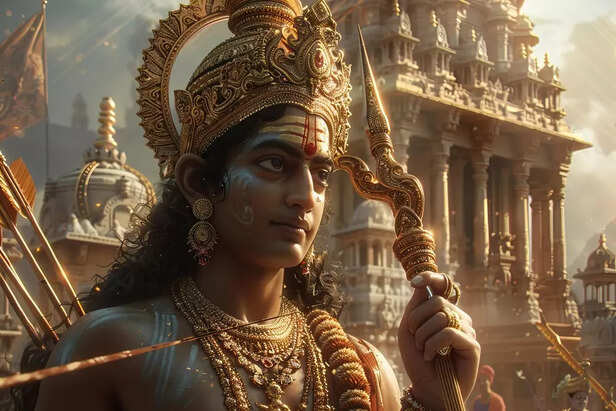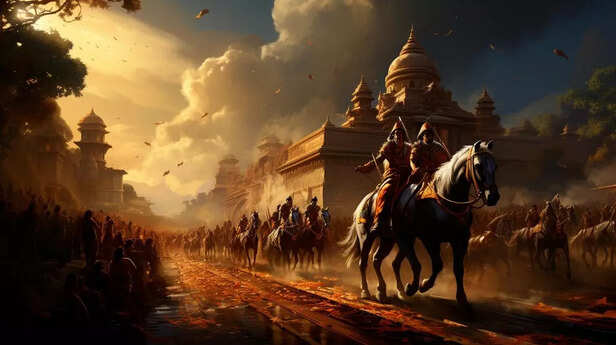From Chandragupta to Ashoka: Who Were the Mauryas, Really?
Nidhi | Jan 15, 2025, 23:11 IST
( Image credit : Timeslife )
The Maurya dynasty remains one of ancient India’s most influential yet enigmatic empires. Were the Mauryas Kshatriyas, Shudras, or of mixed lineage? This article explores their origins, Chandragupta Maurya’s rise to power, his adoption of Jainism, and Ashoka’s embrace of Buddhism after the Kalinga War. Dive into the theories, historical evidence, and cultural legacy that continue to shape our understanding of the Mauryan empire.
The Maurya dynasty, one of the most illustrious empires in Indian history, has left an indelible mark on the subcontinent’s culture, politics, and religion. Yet, the origins of the Mauryas remain a subject of vibrant scholarly debate. Were they Kshatriyas, the warrior class of ancient India? Or did they rise from the Shudras or even a mixed lineage? Exploring these theories not only uncovers the Mauryas’ enigmatic roots but also provides a glimpse into the complexities of ancient Indian society.

The Kshatriyas were the traditional warrior class in the Vedic varna system. Given the Maurya dynasty's military prowess and their ability to establish and maintain a vast empire, many historians argue that they must have been Kshatriyas.
Several ancient texts, including the Mudrarakshasa by Vishakhadatta and Jain traditions, hint at Chandragupta’s humble origins.

Another theory posits that the Mauryas had a mixed lineage, potentially rooted in indigenous tribal communities that assimilated into the broader Indian civilization over time.
 One of the most intriguing aspects of the Mauryas is their contrasting spiritual journeys.
One of the most intriguing aspects of the Mauryas is their contrasting spiritual journeys.
After consolidating his empire, Chandragupta renounced his throne and embraced Jainism, migrating to Shravanabelagola in modern-day Karnataka. Jain traditions depict him as a devout ascetic who practiced sallekhana (fasting to death) in pursuit of spiritual liberation.
 In stark contrast, Chandragupta’s grandson, Ashoka, turned to Buddhism following the bloody Kalinga War.
In stark contrast, Chandragupta’s grandson, Ashoka, turned to Buddhism following the bloody Kalinga War.
 The debate surrounding the Mauryas’ origins—whether they were Kshatriyas, Shudras, or of mixed lineage—reflects the fluid and dynamic nature of ancient Indian society.
The debate surrounding the Mauryas’ origins—whether they were Kshatriyas, Shudras, or of mixed lineage—reflects the fluid and dynamic nature of ancient Indian society.
Chandragupta’s embrace of Jainism and Ashoka’s championing of Buddhism illustrate the dynasty’s deep engagement with India’s spiritual traditions. Together, they remind us of the complexity and richness of India’s past—a legacy that continues to shape its present.
The Argument for Kshatriya Origins

Mauraya
( Image credit : Timeslife )
Historical Context
- Military StrengthThe Mauryas displayed exceptional military capabilities. Chandragupta Maurya, with the strategic guidance of Chanakya, overthrew the powerful Nanda dynasty and successfully resisted Greek incursions led by Alexander’s successors. These feats suggest that the Mauryas might have had a lineage rooted in the warrior traditions of the Kshatriyas.
- Arthashastra's ImplicationsThe Arthashastra, attributed to Chanakya, the chief minister of Chandragupta, outlines the duties of a king and emphasizes military strategy and governance. While it does not explicitly state Chandragupta’s varna, the focus on warfare and statecraft aligns with Kshatriya ideals.
- Brahminical Texts and LegitimizationSome Brahminical texts describe the Mauryas as Kshatriyas, likely as a means to legitimize their rule within the prevailing social structure. However, this perspective is not universally accepted, as it often served political purposes.
The Argument for Shudra Origins
Accounts of Humble Beginnings
- Vishakhadatta's DescriptionThe Mudrarakshasa, a Sanskrit play, describes Chandragupta as a man of modest beginnings, aligning with the possibility that he belonged to the Shudra varna.
- Jain AccountsJain texts suggest that Chandragupta was from a lowly background and emphasize his rise to power as a triumph over the rigid caste system of the time. This narrative is particularly significant, as it reflects the Mauryan dynasty’s break from traditional social hierarchies.
- Chanakya’s RoleChanakya, a Brahmin scholar, played a crucial role in Chandragupta’s rise. His decision to support a ruler from outside the traditional elite suggests a deliberate effort to challenge the dominance of entrenched aristocracies like the Nandas, who were also of non-Kshatriya origins.
Mixed Lineage Theories

Emperor
( Image credit : Timeslife )
Indigenous and Tribal Roots
- Megasthenes’ AccountsGreek ambassador Megasthenes described the Mauryas as being of humble origin. Some scholars interpret this as evidence of their tribal or indigenous background, suggesting that they represented a blend of local and Vedic traditions.
- Integration of Local CulturesThe Mauryas’ policies reflected a synthesis of diverse cultural and social influences. This is evident in Ashoka’s widespread patronage of Buddhism and his respect for other religious traditions, showcasing a ruler who valued pluralism.
Chandragupta’s Jainism and Ashoka’s Buddhism

Chanakya and Chandragupta Maurya
( Image credit : Timeslife )
Chandragupta and Jainism
- Rebellion Against OrthodoxyChandragupta’s choice of Jainism, a faith that challenged Vedic rituals and Brahminical dominance, reflects the revolutionary ethos of his dynasty.
- Regional SignificanceChandragupta’s connection with Jainism contributed to the religion’s growth in southern India, cementing its place in Indian spirituality.
Ashoka and Buddhism

Ashoka
( Image credit : Timeslife )
- Transformation After KalingaAshoka’s remorse for the violence of the Kalinga War marked a turning point. He embraced the principles of non-violence (ahimsa), compassion, and ethical governance, as espoused by Buddhism.
- Global InfluenceAshoka’s patronage of Buddhism extended its reach far beyond India, sending emissaries to Sri Lanka, Central Asia, and the Hellenistic world. The construction of stupas, such as Sanchi, and the inscription of edicts promoting dharma highlighted his commitment to spreading Buddhist ideals.
The Complexity of the Mauryan Identity

Empire
( Image credit : Timeslife )
- Breaking Social BarriersThe Mauryas, regardless of their precise origins, disrupted the rigid caste hierarchies of their time, demonstrating that leadership could arise from outside traditional elites.
- Symbol of InclusivityTheir reign, marked by a blend of Vedic, Jain, and Buddhist traditions, symbolizes India’s cultural pluralism. Chandragupta and Ashoka’s contrasting religious choices highlight the dynasty’s openness to diverse philosophical paths.
- Legacy of GovernanceThe Mauryas established a model of centralized governance, economic prosperity, and cultural patronage that influenced subsequent Indian empires, from the Guptas to the Mughals.
Chandragupta’s embrace of Jainism and Ashoka’s championing of Buddhism illustrate the dynasty’s deep engagement with India’s spiritual traditions. Together, they remind us of the complexity and richness of India’s past—a legacy that continues to shape its present.
